As I packed my suitcase in my initial move to London, I tried to ignore thinking about the lack of warm clothes in my case, the job I didn’t have or the city I didn’t know. I instead fussed and fretted over what little space remained for my black limes (loomi), my gahwa (Bahraini coffee) or my spice mixes. I was more concerned about getting the food through customs or how confidently I could breeze through the green signs of ‘Nothing to Declare’ at baggage claim. Would they stop me and take away the mini grocery store in my suitcase?, I worried. Thankfully this fear has yet to be realised, no matter how many times I’ve returned to replenish my stock.
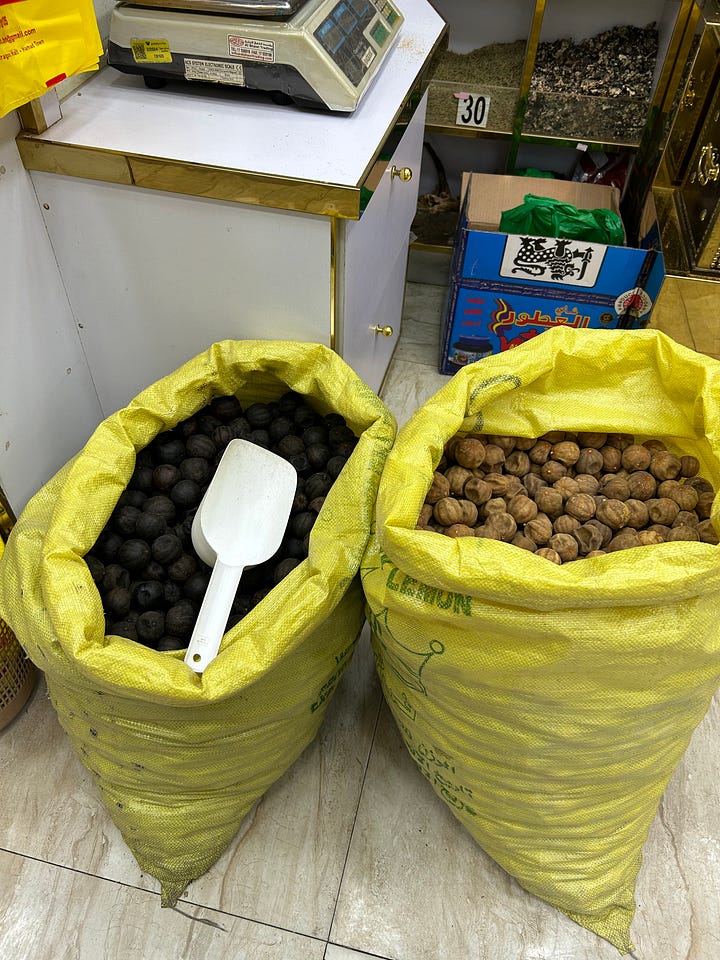
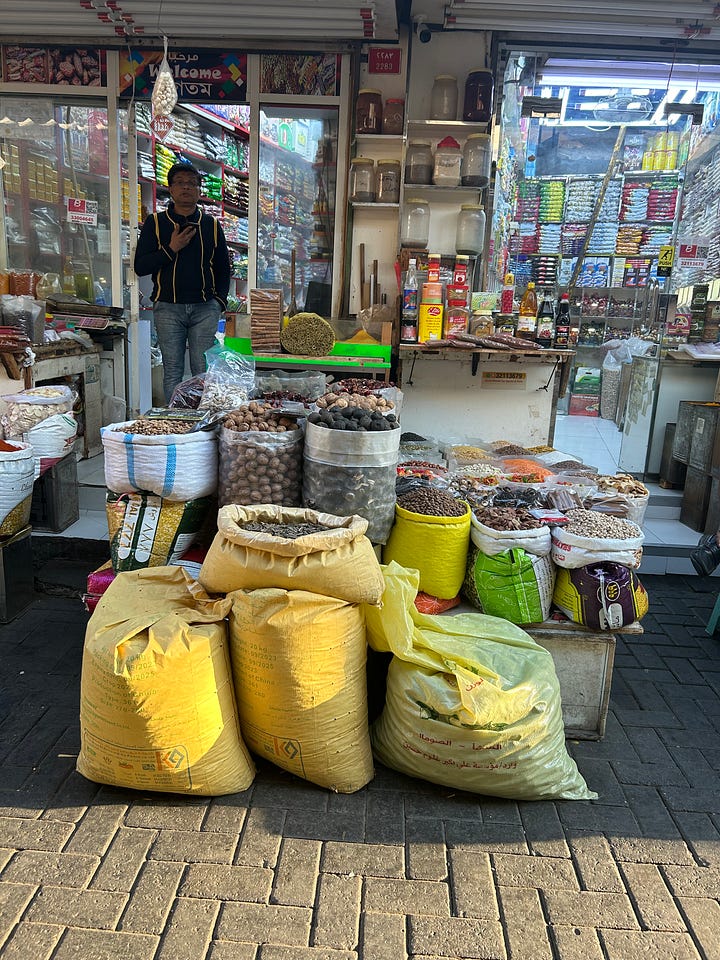
I never used to think about black limes the way I do now. They were sort of blended into the background of things, existing as part of a larger symphony of spices that go into many Bahraini foods. They’d show up nestled into big rice platters, or were found floating in stews, curries or dals. They’d be chopped up into the stuffing of dumplings or ground into the base of marinades. They’d be boiled for salty brines or sweet teas and they’d sit, unassuming and somewhat bashful, in a jar in my kitchen cupboard, in every islander’s kitchen cupboard, always.
I did used to think about crumpets though, in a way I probably don’t now. I often asked my mum if we would get to eat ‘the hole-y bread’ at grandma and grandad’s when we went to visit them in England. I was so fascinated with its texture, the dense sponginess of it, the way it sort of squeaked when I sunk my teeth into it, or how the butter oozed onto my plate, my hands, my shirt. I later learnt that you always had to toast them twice, once for a light toast but twice, twice for the pros that know all about a crisp crumpet exterior. Followed by a butter once, to settle into the grooves, and then a butter a second time, for good measure. These magical, butter-filled holes I found so intriguing- the wonders of fermentation still very much undiscovered by my young and forever curious mind. But how we perceive food is completely relative, as they say: one man’s crumpet is another man’s treasure. Or something like that. All this to say that ‘exotic’ is completely dependant on where you’re standing: for some, black limes are such curious things, for others crumpets are the wildest bread they’ve ever come across. Then there’s the crossover where they both exist, where two cultures sort of meet and acknowledge each other and it’s not always harmonious or graceful, but it works. This is the world I occupy, and I quite like it here, this delicious space of black limes and crumpets, all at once sour and bitter and buttery and nice.
As I began to settle into life in London I realised two things: one was that black limes had yet to have their moment in the West, and the second was that I really needed to work on growing my London skin. The first part I knew I could rectify, the second, well that was a little bit harder. I was used to the soft, almost unrelenting kindness of small communities, used to knowing that I could leave my car unlocked while I dashed into the store, or that I was always within close proximity of someone I knew. London’s anonymity was equal parts liberating and terrifying, its demeanour louder, its edges sharper. “Put your London skin on”, my Irish friend had suggested, a seasoned Londoner from a small Irish town of her own. In other words, toughen up.
I haven’t yet mastered the thicker skin part but, as the unofficial black lime ambassador, I’m proud of the PR I’ve done thus far. At first, black limes would mostly sit snug in my cupboard in my London house-share and this knowledge in itself would bring me comfort. I’d cook with them on my days off, smile and nod at how reliably bitter, earthy, punchy they were, how they all at once heightened my senses and calmed my spirit in a most familiar way. But once I started working at the Ottolenghi test kitchen, I began sprinkling them into the recipes I developed. I never do things by half measure, so they’d show up in recipes almost fiercely, as loud and as punchy as the black limes themselves: cooked with onions and tomato paste to coat deep fried tofu, paired with burnt honey and lemon and spooned onto baked feta, folded into focaccia, tossed into braised greens. Black limes had become an identity in my cooking, something stable I could hold onto when everything else felt like it was spinning- the days, months, years that propelled me forwards with what felt like little to no control over time. London time.
“Why black limes?”, my colleagues had asked, unfamiliar with this ingredient themselves, “why not?”, I had retorted, “they’re way more dramatic than regular dried limes”. And, my friends, you must know that all chefs love a bit of drama.
It wasn’t long after the cookbook ‘Ottolenghi Flavour’ had come out, which featured a couple of my black lime recipes, that I had my first black lime encounter in a generic supermarket (that is to say, not a specialist Middle Eastern or Turkish grocery store). I remember walking down the Waitrose isle and stumbling upon a small pot of black limes in their ‘Cooks Ingredients’ collection. I stood there staring at them for the longest time, marvelling at their existence in the supermarket but also at their price- £2 for just a handful, maybe five, dried limes, about 4x more expensive than what I was used to! But they were there, and this in itself was a huge deal. The power of Ottolenghi, I had thought to myself as I put them down and walked away. But then I dared have another thought too:
Wait, did I do that?
In truth I’ll never really know. But I’d like to think that small voices can create big change given enough drive and determination, that a woman with a mission and some zest up her sleeve might have kickstarted a bigger domino effect…to black limes in Waitrose, to black limes in your cupboards.
Nowadays I’ll see chefs I admire experimenting with black limes in creative ways I never even thought of. I love how they’ve emerged and taken residence in the West, perhaps not so much so that they’re accessible everywhere, but enough that a foodie might have heard of them, or even think to buy a bag. But I do have one sticking point I need to address about them and it is this:
The Middle East is a beautifully diverse and colourful region, so much so that even our dialects will differ from one country to the next, or from one region to the other. The food, in this sense, is just as varied, and this is perhaps one of the most joyous things to know. Dried limes are the back-bone of cooking in the Persian Gulf, Iran and Iraq. For me, it’s so important to not only celebrate this, but to acknowledge it. Adopt and be inspired by a culture, yes, but also- give back.
Today’s recipe celebrates a traditional Bahraini street food called ‘tikka’. A little confusing, I know, as it’s nothing like the more widely known Indian chicken tikka. Bahraini tikka is usually made with cubes of lamb or beef, marinated in ground black lime, threaded onto skewers with bits of lamb fat and then cooked over charcoal until the meat is charred and the fat has rendered nicely. It is then served over tanour bread (a type of flatbread made in the clay oven) with sliced raw onion, a type of rocket called jarjeer, green chillies and sometimes a herby green yoghurt. You eat the whole thing with your hands, tearing off a piece of bread and stuffing it with bits of tikka and all of its toppings to make perfect little tikka bundles. And you have to eat it quickly, while the meat is still warm, tender, sour and delicious.
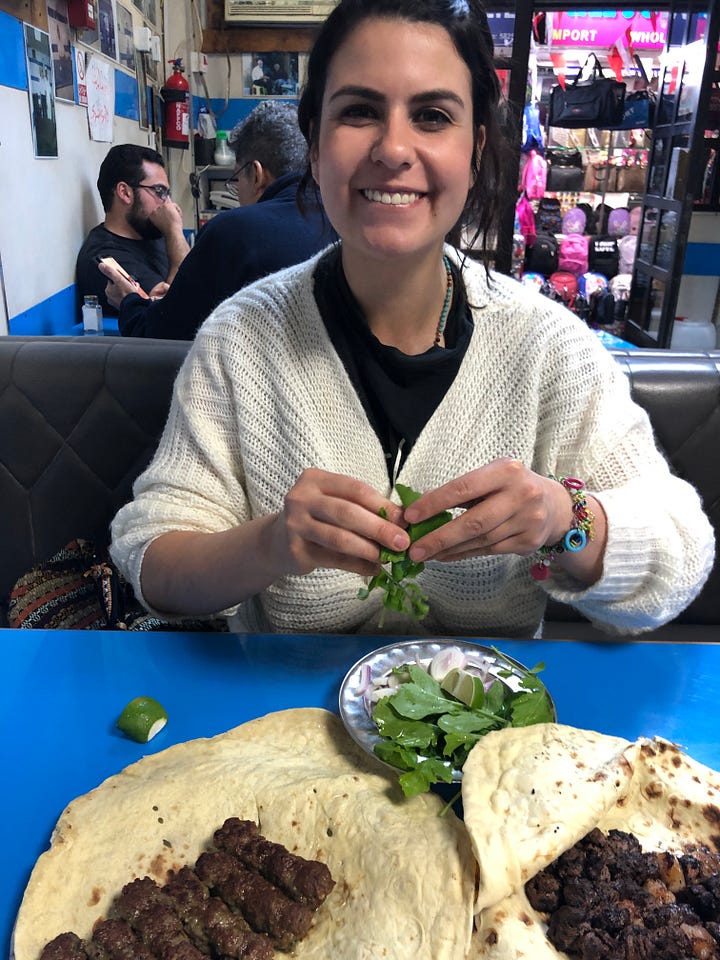
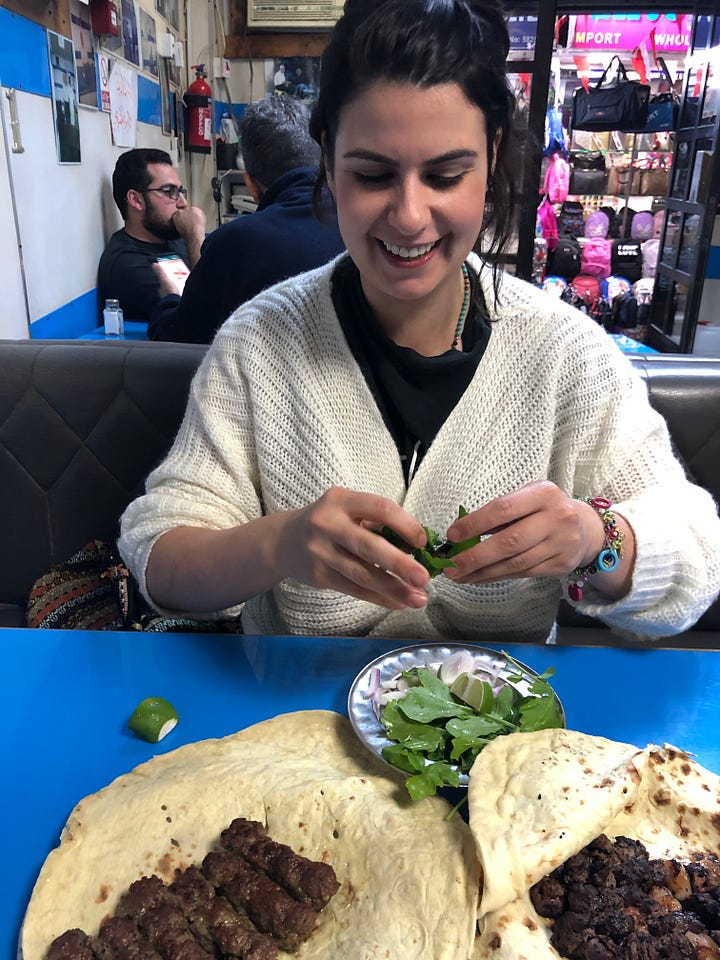
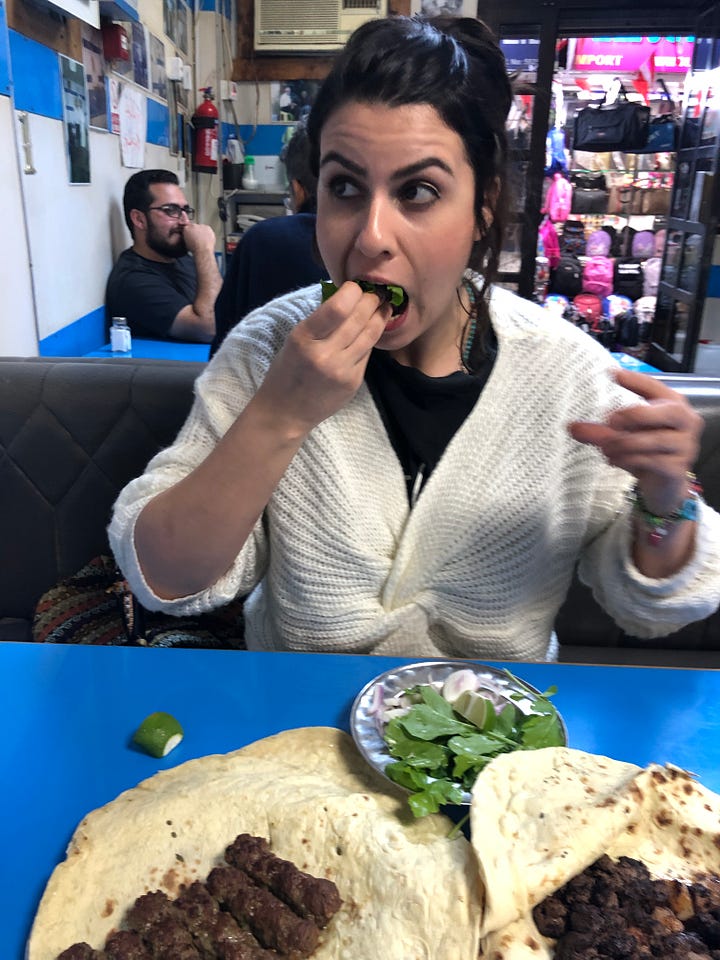
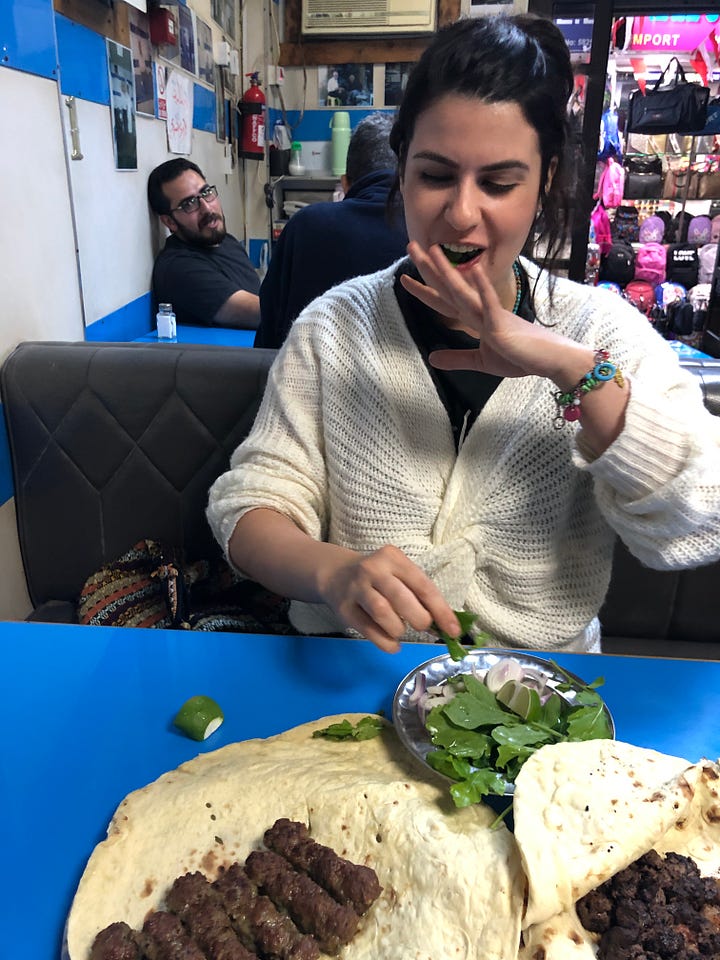
The whole thing is an unmatched experience, hard to replicate at home but also not impossible. Marinating meat in ground black lime has been around for some time, but Bahrainis are generational experts in this game. Before we dive into the recipe though, some black lime facts for you below. I urge you to read this, if only to flex your black lime knowledge at your next dinner party.
So, what even are black limes?
In short, they’re basically limes that have been dried out in the sun until completely hollow. They come in two colours, one that is sort of a like a brownish-yellow and another that is completely black. I used to think that the black limes were dried out for longer, that the harsh desert sun worked its wonders in creating these dark looking limes, but in recent years I’ve discovered that this is untrue, and that black limes are a man-made result of being heat treated. In this sense both limes are therefore the same thing, except one is significantly more dramatic looking.
What do they taste like? I’d say sour, bitter, earthy and intense. They don’t have the vibrant, zesty flavour of a fresh lemon or lime, so I wouldn’t recommend treating them as the same ingredient. If you don’t have any to hand and they’re in the background of a recipe (ie part of a larger spice mix), then you can probably leave them out, but if they’re integral to the main dish (as with the tikka below), then I would reconsider making it until you can get your hands on some. You can find them in most Middle Eastern grocery stores.
In cooking, both types of dried limes can be used interchangeably, except for specific traditional recipes where one or the other might be called for (such as with Bahraini tikka). The dried limes can be pierced and left whole, ready to be thrown into the base of all sorts of stews, soups and anything liquid-based. In this way they’ll slowly release their flavour into the dish without being too overwhelming- most people will pick out and discard them at the end (the way you would any whole spice), or squeeze them to release more of their juices before discarding. Another way to use black limes is to grind them into a powder. To do this, use the palm of your hand to press against the black lime and crush it open. Pick out and discard the pips (they are overly bitter) and then pop everything else into a spice grinder and grind it into a powder. This can then be used for rubs, marinades and all sorts of sweet and savoury dishes.
I always recommend buying dried limes whole and then grinding them yourself as and when you need to. They are relatively inexpensive, are absolute flavour bombs and will keep well in your cupboards for a very long time.
Lastly, black limes go by different names such as noomi Basra in Iraq, limu Omani in Oman or loomi Aswad in Bahrain. I usually just refer to them as loomi.
Fun Fact: if you toss ground black lime with brown sugar, it tastes like the coating of sour skittles!
Bahraini Tikka
Keep reading with a 7-day free trial
Subscribe to noorishbynoor to keep reading this post and get 7 days of free access to the full post archives.






